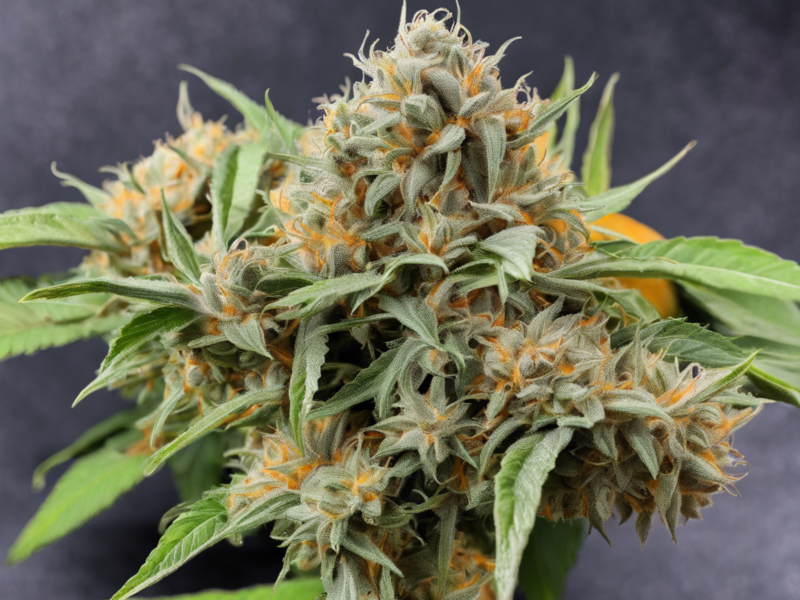Introduction
Cannabis enthusiasts have long been fascinated by the diverse array of strains available, each with its unique flavor profiles, effects, and genetic lineage. One such strain that has been gaining popularity in recent years is the Mango strain, known for its sweet and tropical flavors that evoke images of sun-kissed beaches and ripe fruit. In this comprehensive guide, we will delve into the origins of the Mango strain, its flavor and aroma profile, effects, medical benefits, growing tips, and more.
The Origins of Mango Strain
The Mango strain is believed to be a hybrid of Afghan and Kush genetics, resulting in a well-balanced indica–sativa profile. The precise origins of the strain are somewhat shrouded in mystery, with some sources claiming that it was first bred in the Netherlands while others suggest it has South Asian roots. Regardless of its exact lineage, Mango has become a favorite among cannabis connoisseurs for its unique terpene profile and enjoyable effects.
Flavor and Aroma Profile
As the name suggests, the Mango strain is renowned for its sweet, tropical, and fruity aroma and flavor. When properly cured, the buds emit a tantalizing scent reminiscent of ripe mangoes, with hints of citrus, pine, and earthiness. The taste is equally delightful, with a smooth smoke that carries the same fruity notes on the exhale. This makes Mango a favorite for those who appreciate flavorful cannabis varieties that go beyond the typical earthy, skunky profiles.
Effects and Medical Benefits
In terms of effects, Mango is often described as a well-balanced strain that offers the best of both worlds. The initial euphoric and uplifting effects are typical of sativa-dominant strains, providing users with a boost in creativity and mood. However, these cerebral effects are tempered by the strain’s indica lineage, which also delivers a sense of relaxation and body high. This makes Mango a great choice for both daytime and evening use, depending on the individual’s preferences.
Medicinally, Mango is valued for its ability to relieve stress, anxiety, and depression, thanks to its mood-boosting properties. Additionally, its pain-relieving and anti-inflammatory effects make it a popular choice among patients suffering from chronic pain, arthritis, and muscle spasms. Some users also report that Mango can help alleviate nausea and loss of appetite, making it a versatile strain for a variety of medical conditions.
Growing Tips for Mango Strain
For those interested in cultivating their own Mango plants, there are a few key tips to keep in mind. Mango tends to prefer a warm and humid climate, mimicking its tropical origins. Indoor cultivation is recommended for novice growers, as it allows for better control over factors like humidity and temperature. The plants are known to grow medium to tall in height and produce dense, resinous buds that are a sight to behold.
When growing Mango indoors, pruning and trimming are essential to ensure proper airflow and prevent mold and mildew. LST (Low Stress Training) techniques can also help optimize yields and promote even canopy growth. Outdoor growers in warmer climates can also thrive with the Mango strain, but it is essential to protect the plants from excessive moisture and pests.
Conclusion
In conclusion, the Mango strain is a delightful and flavorful option for cannabis enthusiasts seeking a tropical escape in their smoking experience. With its sweet and fruity aroma, well-balanced effects, and potential medical benefits, Mango has secured its place among the top strains in the market. Whether you are looking for a mood-boosting creativity enhancer or a relaxing nightcap, Mango has something to offer for everyone.
Frequently Asked Questions (FAQs)
- What is the THC content of Mango strain?
-
The THC content of Mango strain typically ranges from 15% to 20%, but it can vary depending on growing conditions and harvest times.
-
Does Mango strain cause couch-lock?
-
While Mango strain does have some indica effects, it is not known for causing extreme couch-lock. Users can still enjoy its uplifting and relaxing effects without feeling too sedated.
-
Are there any side effects associated with Mango strain?
-
Common side effects of Mango strain may include dry mouth, dry eyes, and in some cases, paranoia or anxiety in users sensitive to THC.
-
Can Mango strain help with insomnia?
-
Mango strain’s relaxing effects may help some individuals with insomnia, but individual responses to cannabis strains can vary. It’s best to experiment with different strains to find what works for you.
-
Is Mango strain suitable for beginners?
-
Mango strain’s moderate THC levels and balanced effects make it a suitable option for beginners, especially those who enjoy fruity flavors and a mix of cerebral and body highs.
-
How long does it take for Mango plants to flower?
-
Mango strain plants typically take around 8 to 9 weeks to flower, but some phenotypes may require longer or shorter flowering times.
-
Can you extract terpenes from Mango strain for other uses?
-
Yes, terpenes from Mango strain can be extracted and used in various products such as aromatherapy oils, edibles, and topicals to enjoy its tropical flavor and potential therapeutic benefits.
-
What nutrients are essential for growing Mango strain?
-
When growing Mango strain, it is important to provide nitrogen, phosphorus, potassium, and micronutrients like calcium and magnesium to support healthy plant growth and bud development.
-
Are there any alternative strains with similar flavors to Mango strain?
-
Some alternative strains with fruity and tropical flavors similar to Mango include Pineapple Express, Banana Kush, Tropical Punch, and Gelato.
-
Can Mango strain be used for making edibles and concentrates?
- Yes, Mango strain can be used to make edibles, concentrates, and tinctures, allowing users to enjoy its unique flavor and effects through different consumption methods.

